The Ten Most Important Comics of the 2000s
By Hervé St-Louis
January 5, 2014 - 21:00
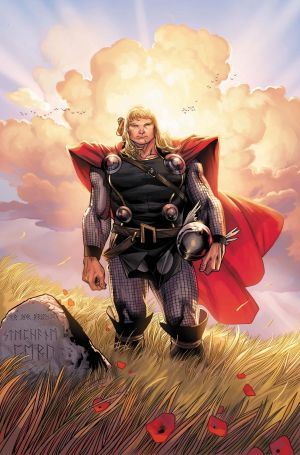 |
I slowly came to realization that the 2000s and the 2010s were different after going on a binge and watching all of Lost for the first time in the space of six months. The last three seasons were all consumed in December 2013. Watching Lost, I realized that the themes and the series, how it’s built, its actors, its problems, its best moments were not something that were familiar to me today in the 2010s. It didn’t feel dated at all, but it had this vibe which I also felt in television series like Prison Break and Flashforward. It’s a world that has been impacted by the terrorist attacks of 2001. It’s a world where social media is just beginning to be omnipresent in our lives but we are not tethered to technology to the same extent that we are today, always carrying our smartphones with us wherever we go.
This is similar in comics. What I find interesting about the 2000s is that technology-wise and stylewise, the decade is not too distant. Special effects in films like the X-Men and action flicks like The Bourne Identity still seem well crafted but something is slightly off. As my colleague Andy Frisk would say, the quest in the Lords of the Ring is different than the one in The Hobbit. The Lords of the Ring is about a fallibility of man, about his moral imperfection that has to be corrected though distributed power-sharing. It is not about conspiracy and how authority figures are no longer to be trusted.
Trust mattered. Both DC and Marvel Comics published several comics in commemoration of the 911. Suddenly, when the Submariner threatened to submerged all of New York City or Doctor Octopus attacked a bank vault, there were consequences to that act beyond the world of the super hero. Super heroes, these bastions of comic book cultures had to protect us, but at the same time, they felt so much inferior to common heroes, like cops and firemen. The common man, given some authority by the state became the new face of heroism. The young American soldier crippled or losing his life in Iraq and Afghanistan was the real hero. How could Spider-man and Batman compete with him?
Super heroes had to become common men and women in order to become realistic again. Everything that happened in comics would have to have a serious cultural and scientific foundation in reality. Suddenly, super heroes were being outed, losing their secret identities and we did not disapprove. At the same times, their costumes started to become realistic too. The new look in a super hero costume had to incorporate stitches and thick soles. These redesigns at once predicated and were determined by the new star of the movie world, the comic book character. The 2000s saw a record of comics whether super hero-based or not adapted to the movies. Now comics are an accepted and favoured source of material for filmmakers, better than video games and as rich as novels.
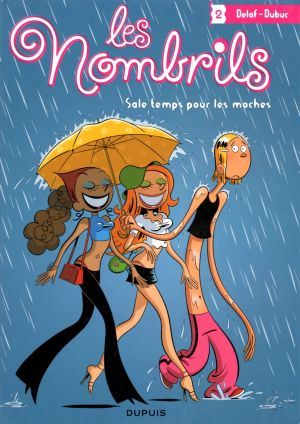 |
At the same time, I realized that many of the comics in the list were part of a greater family of books and larger developments happening in comics. I was best then to single out the breakaway series of comics that was at the source of latter development. Thus, while I felt that House of M and Avengers Dissasembled mattered, they only do when looking at the larger picture. They belong to vast trends in comics and individually are less important. This list, I predict, will please absolutely no one. I’m conflicted by it myself, having made important last minute changes. How I guided my judgment is not to base this list on what I like to read or what I think matters in a genre I follow. What matters is how English-speaking comics have changed in the 2000s. Of course, super heroes dominate. I won’t apologize for that. Get over it if it bugs you. Of course certain publishers dominate. It doesn’t mean that other comics are not as accomplished or as excellent. But what it means is that they haven’t changed comics in the 2000s as much.
The last point is important. I used a gross decade starting with 2000 and ending with 2009 although technically, the decade started in 2001 and ended in 2010. Many comics from the late 1990s exploded in the 2000s. I tried to limit those as much as possible. Helping me with this list are ComicBookBin Editor in Chief Andy Frisk, and writers Leroy Douresseau and Zak Edward. If you think that you disagree with my list, let me tell you, I expect them to be the first disagree with my final list. Following the top 10 list, I will include the runners up that didn’t make it. Of course, some comics were voted multiple times by us. So it’s normal that the top results reflect that. Other choices are more nuanced for me.
Personally, I’ve enjoyed working on this list. It covers the breadth of material we have covered at ComicBookBin since 2002. It also made me ask myself if ComicBookBin was still a 2000s comics news site. Seriously, when you visit us, do you feel that we’re lame and tacky or do you feel that we’re keeping up with the times? I really suggest that you don’t skip to find out what comics is deemed by us the most important one of the 2000s. Half of the fun is to read why we included the others too. Please leave us some feedback and do debate this issue. But for once, I’m gonna ask that you do it here. Often at ComicBookBin, we have raised issues that mattered, only to see the discussion move on some other comics site. What gives? We do all the work, and other people just cash in? Do engage us on our Twitter at @comicbookbin or on our Facebook page though! Enjoy.
10- Blankets (Top Shelf)
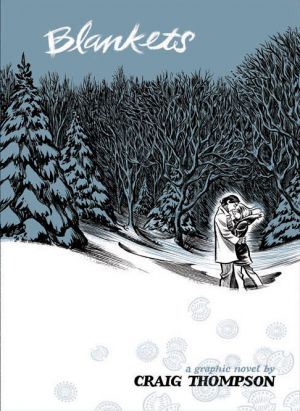 |
Zak: Craig Thompson’s Blankets was the first book I ever read that I immediately started reading the second after I finished, and I have more than a few memories of sitting around with a group of friends, one silently pouring over Blankets while the rest of us chatted. Thompson has said the book was an attempt to convey what it’s like to sleep next to someone for the first time, and he brings in all the emotions that come along with that journey. A touching story about adolescence and one man’s coming to grips with his own upbringing, especially his religious upbringing, Blankets is proof that comics grew up, taking that fact for granted to tell a story no comic fan should go without.
9-20th Century Boys (Viz Comics)
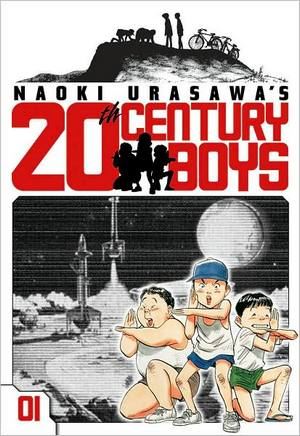 |
Leroy: Naoki Urasawa's narrative, unhinged in time, spans the better part of five decades. An intricate character drama and conspiracy thriller, 20th Century Boys insists that one person can change the world, and it seems as if every character in the story has a chance to be that one person who changes the world.
Hervé: Why is this comics here? It’s here because even though many North American readers like to ignore mangas, mangas exist, thrive, and often oversell every original English-language comics in the English-speaking world. 20th Century Boys is now a movie and is probably one of the most psychologically charged comics of the 2000s. Often, I wish people would pay more attention to what comics are published outside of the English-speaking world.
8- G.I.Joe #1 (Devil’s Due)
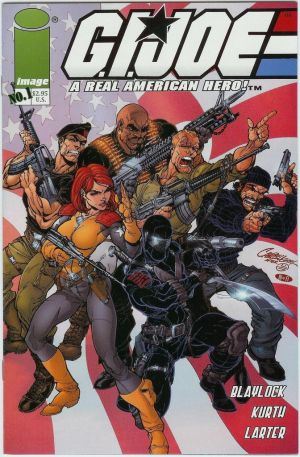 |
Let’s be frank G.I. Joe by Devil’s Due was not the greatest comics by a long shot. But what it represents and the reason I put it in this list, is because it started the whole craze around nostalgia-based comics and serious exploitation of licensed properties by comic book publishers. While Dark Horse Comics had been publishing Starwars and Buffy-related comics for a long time, these properties always seemed to be on the margins of the comic book world. With G.I. Joe by Devil’s Due, the comics became the central point of the publisher while original properties were sidelined. Of course, the revival of the G.I. Joe led to the aborted revival of the Transformers by Dreamwave Comics and then the repatriation of a host of series by new comics publisher IDW Publishing. G.I. Joe was written by hardcore fans of the old television and comics series. It was treated with the utmost respect by its creators and not as a joke or a way to sell toys. From the valiant effort of publisher and writer Josh Blaylock and creators John Larter and Steve Kurth, property owner Hasbro realized that there was an active adult audience for this property. Any movie of the Transformers or G.I. Joe that you see owes parts of its existence to the G.I. Joe series published in October 2001 by Devil’s Due.
7-Scott Pilgrim (Oni Press)
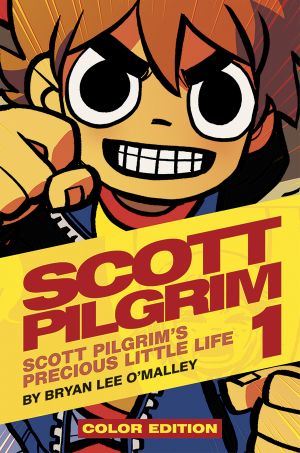 |
Zak: Canadian illustrator Bryan Lee O’Malley ended up drawing one of the most relatable and hilarious comic series of the 2000s when he began Scott Pilgrim, the story of a down-and-out 20-something who meets the rollerblading girl of his dreams. Scott Pilgrim is drawn to make every page, every panel almost, a funny, charming, and downright entertaining book that perfectly encapsulates what it was like to be that age in the 2000s, before smart phones and back when everyone still remembered classic NES and Sega Genesis games. Densely packed with pop culture that will surely date the series, Scott Pilgrim remains a book that no one has been able to replicate. Plenty have tried, but no one has matched O’Malley’s characterization, quippy dialogue, and referential asides that nearly require a separate book of annotations. The film adaptation, starring Michael Cera and brilliantly directed by Edgar Wright, was probably the most famous of box office bombs of the 2000s as well, but the movie is just as funny and charming as its source material, even if the comic remains a precious gem of Canadian comics.
Hervé: While compiling the list, I debated the inclusion of Kick Ass but soon realized that Kick Ass was just the super hero version of Scott Pilgrim in and out of comics. I would argue that Kick Ass would not have been possible or a success without Scott Pilgrim. Therefore, I added the real innovation and not its super heroic version to this list.
6-Civil War (Marvel Comics)
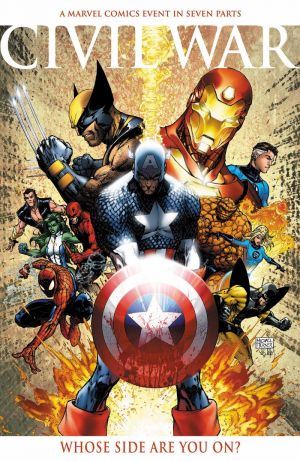 |
Andy: A well thought out and nuanced commentary on the War on Terror that ended with metaphoric death of the American Dream (as it was known) with the death of Steve Rogers. The dream would be reborn in the form of a new Captain America (Bucky Barnes), but the philosophical battle between Rogers and Stark would re-energize the old continuity (The Ultimate Universe was running away with the glory and attention just before Civil War).
Hervé: I included Civil War here because it was the typical company-wide crossover of the 2000s where all the resources of a publisher were used to propel one story. Both Marvel and DC Comics did it abundantly in the 2000s and before. But the main difference in the 2000s was the amount of changes and chaos that this created to the publishers’ entire lines. Instead of totally rebooting their universes or having major paradigm shifts every 20 years, in the 2000s, publishers would change everything year after year. House of M, Invasion Avengers Dissassembled were all part of that movement. However, with Civil War, it was not a story pitting the good guys versus the bad guys. It was the good guys figuring things out. Even the death of minor character with very few supporters like Black Goliath mattered. The series was a success and probably the best companywide crossover in the 2000s and ever since.
5-Identity Crisis (DC Comics)
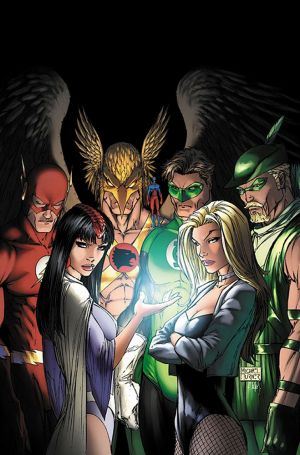 |
Identity Crisis made it in this list because it changed DC Comics. Brad Meltzer’s story revived the old Bronze and Silver Age DC Comics history that had been stacked away by John Byrne after Crisis. Just like Brian Bendis over at Marvel Comics, Meltzer’s voice and tone influenced every other comics published by DC Comics since. His storytelling mannerisms were adopted by other writers like Geoff Johns and Mark Waid. Comics characters had spoken in the first person before and narrated their own stories but not to the same extent. What Meltzer exemplifies best is the death of the comic thought bubble. Inner monologue remained, but it became a lyrical self conscious part of the written elements of comics. It was no longer part of the active part of the comics, such as the speech bubble. What Meltzer did was to craft a story where the power of the writer really overpowered the artist. The relative preponderance of the writer versus the artist is a development from the 2000s that really differs from the 1990s where the artists, dominated comics storytelling. Visually, Identity Crisis was strong. Rags Morales, I have always claimed is one of the best costume designers in comics. Also, his facial expressions, while not comically engaged, like Kevin Maguire, are subtle enough to convey quite an interesting range of emotions. Identity Crisis was a caper, the likes of which reminded readers why DC Comics was originally called Detective Comics. It made sense of several characters and allowed the return and revitalization of older Silver Age characters such Barry Allen (Flash) and Hal Jordan (Green Lantern). It also told a story outside of the point of view of DC Comics’ imposed trinity of Superman, Wonder Woman and Batman. The second stringers had their last hurray in Identity Crisis.
4-Ultimate Spider-man (Marvel Comics)
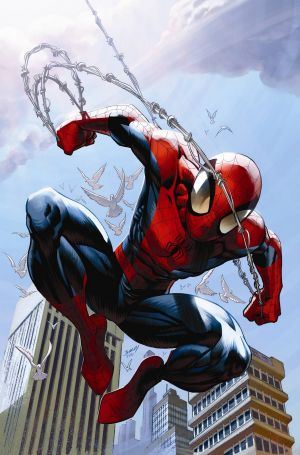 |
Zak Edward: When Marvel decided to make a new, reader friendly line of comics, they brought on then-newcomer Brian Michael Bendis to reboot Spider-Man, turning Peter Parker’s original 11 page origin story into seven issues. From there, Bendis created one of the most consistently entertaining comics on the shelves. Packed full of Bendis’ trademark quippy dialogue, Ultimate Spider-Man is superheroics at its best, and certainly Peter Parker to its core. Part teen drama, part superhero action, Bendis took old concepts and breathed new life into them, becoming one of the most influential and prolific writers Marvel Comics has ever had. Of course, Peter Parker has since been replaced by Miles Morales, and the fate of the series hangs in the balance with the next Ultimate universe event, but Ultimate Spider-Man remains the most consistently enjoyable series the Ultimate Universe ever offered. Plus, Bendis and longtime illustrator Mark Bagley broke the record of longest collaboration on a Marvel Comic, with 111 issues straight, nearly every single one an incredible read.”
Hervé: Ultimate Spider-man for me represents one kind of comics that was very popular during the 2000s. It was a self conscious and aware comic book series similar to Powers and much of Brian Bendis’ s work. I seriously debated the inclusion of Powers and Daredevil, but I think Ultimate Spider-man encapsulates many of the qualities and flavour comics under Brian Bendis and at Marvel Comics had in the 2000s. They were irreverent.
3-Fables (Vertigo)
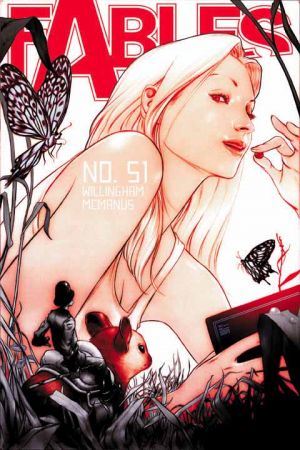 |
Andy: Like the television shows Once Upon a Time and Grimm? Thank Bill Willingham for demonstrating and laying out the blueprint for smart, adult oriented, and edgy fairy tales. Much like Gaiman's Books of Magic "didn't" inspire Harry Potter, Fables "didn't" inspire Once Upon a Time. You just wouldn't have had them without the prior (and in many ways better) works from Gaiman and Willingham.
Zak: While I haven’t read any of the new stuff, I think Fables is an important book for several reasons. One, it’s a gateway drug for comics; I don’t know how many people I’ve met who didn’t read comics before Fables. Two, it is some of the best illustrated and well written comics going. Two, the powerhouse team of longtime industry veterans Bill Willingham and Mark Buckingham is almost unmatched in beautiful collaboration. Three, the series is solid storytelling through and through, taking fairy tale figures and giving them new spins for a sprawling study of diaspora and the power of myth. Plus the characters undergo serious development and are well-rounded. There are moments that will make you cry, shock you, and stick with you. Now that Willingham has decided to end the series, it’s hard to believe what a staple in the industry this series has become. Part of me thinks it nearly single-handedly supported Vertigo Comics for a while.
2-The Walking Dead (Image)
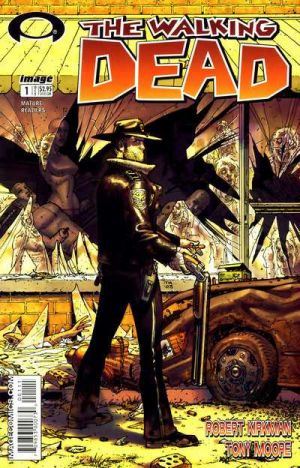 |
Andy: Almost singlehandedly creating the current zombie craze (that has thankfully replaced the emo vampire craze), The Walking Dead proved once again that a tired concept can be made fresh again. The trick to doing this is by focusing on the characters that populate the story, not the monsters. Focus on character rather than special effects or monster gimmicks or super powers in order to tell a great story goes all the way back to the first issues of Stan Lee and Steve Ditko's Amazing Spider-Man. It's a tried and true formula and Robert Kirkman has done a great job turning it into a media mega machine.
Hervé: The Walking Dead is easy to buy at the comic store and at the bookstore. It remains in print and each volume is well-announced. Whether you started a decade ago or tomorrow, you can easily follow the story whether you are a long time comic book fan or someone who just followed the series trough its television adaptation. That most people think of The Walking Dead as a televised series first matters. Although it came late to television’s zombie craze, through the usage of the best elements of the comic book, The Walking Dead has been able to become the defining zombie feature in any media. That’s not a small feat. Now I need to make a nuanced comment. In my initial list of over 30 comics, I added Viper Comics’ Dead@17. Both series starred zombies and started at around the same time in October 2003. However, Dead@17, while featuring truckloads of undead, was more of a veiled Christian comics and never really made a big deal about featuring zombies every page.
1-The Ultimates (Marvel Comics)
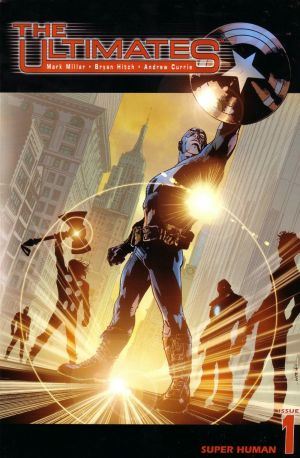 |
Zak: The single most defining event of the 2000s was 9/11, hands down, and you can see the tragedy of that Tuesday morning seep into nearly every piece of media for the next nine years. There were plenty of attempts to think about superheroes in the context of 9/11, and the fallout events like the Patriot Act, but none came close to Mark Millar and Brian Hitch’s The Ultimates. Casting the Avengers as soldiers involved in the War on Terror, Millar and Hitch made them less heroes and more soldiers. Each represented a problem with the post-9/11 America: Captain America became the unnerving problems of patriotism, Iron Man the irresponsible war profiteer, and Bruce Banner the underside of the feelings of vulnerability and inadequacy that 9/11 gave most of the Western World. The Ultimates is both brilliant and filled with gung-ho action that scares and delights in equal measure.
Hervé: In my personal list, I had pegged The Ultimates as the #2 most important comics of the 2000s. It mattered in different ways for me. The series was always late. Every new issue was an event. Many comics in the 2000s had this problem to the extent that publishers had to deal with the issue in order to stop alienating readers and protect their sales. The Ultimates had such a following that it mattered that it was late. It also mattered that it was almost a movie adaptation of what an Avengers’ movie would be like. I would argue, that it would have been a better Avengers’ movie than the one we eventually did have. In any case, it foreshadowed the Marvel cinematic universe with its military and secret agency affiliation with S.H.I.E.L.D. The comics, of course modeled its main cast on real actors, such as Samuel L. Jackson in the role of Nick Fury. The comics also showed that changing the ethnicity of a character was not such a bad thing and often can be an improvement. No one ever complained about the Wasp being Asian and by now, having Nick Fury as a black guy seems like the new normal, even in the regular 616 Avengers’ universe.
Comics that Nearly Made Our Top 10
Fantastic Four (by Jonathan Hickman - Marvel Comics)
Andy: Made Marvel's most uncool property one of its coolest ever. New insights and stories that truly fit the cosmic scale and importance of Marvel's First Family.
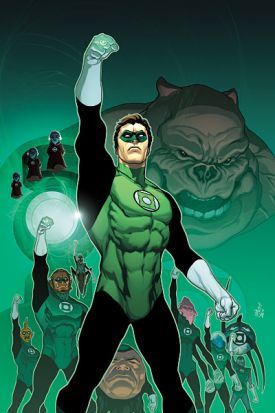 |
Andy: To include everything from Rebirth through Brightest Day. Johns built up the Green Lantern franchise into something to rival the expansiveness of Star Wars. He revitalized not only Hal Jordan, but all of his supporting characters of the years, including the other lanterns John Stewart, Guy Gardner, Kyle Rayner, Kilowog, and a host of others. Johns' Sinestro Corps War was DC Comics' answer to the post 9/11 commentary that was Marvel's Civil War. Brilliant stuff.
Superman Secret Origin (DC Comics)
Andy: Johns would turn his powers of superhero revitalization on the greatest superhero of all and bring Superman into the 21st Century. Unfortunately, it would be all for naught when The Ne 52 would start. It's a shame. Johns' Superman Secret Origin would be the only other Superman reboot worth reading since Byrne's Man of Steel.
Thor (by J Micheal Straczynski - Marvel Comics)
Andy: Thor was so unpopular that he would be left in limbo for years by the powers that be at Marvel. Discovering that there might be an audience for the character when he made his faux return during Civil War, Marvel worked wonders with the character by putting him in Straczynski's hands. His run would end up being second only to Simonson's run, and in some ways be better.
Supergirl (by Sterling Gates and Jamal Igle - DC Comics)
Andy: The only time in the history of the character that Kara Zor El would not only be readable, but critically acclaimed. Gates really got at the heart of the character and Igle's version of her will forever remain the benchmark that she will be measured by (if future writers and artists are smart). Supergirl always kind of floundered as a solo character (and is again horribly in The New 52-the reboot of which wiped away everything great that Gates and Igle built up for the character). Gates and Igles' Supergirl run will also forever stand as a shining example of what a great artist and writer can do with a relatively weak character.
Transmetropolitan (by Warren Ellis - Vertigo)
Andy: Technically a series that bridged the 90s with 00s, but was incredibly prescient with its presentation of the type of mass manipulation and insanity that would engulf the dawning 21st Century's media, Transmetropolitian was cyberpunk, sci-fi, social commentary, and political satire all rolled into one. It foreshadowed everything from the internet revolution (it really wouldn't make its full force known until the early 00s) to smart phones to revolutions powered by social media. A brilliant and irreverent work that should be required reading for all students of early 21st Century mass media.
The Filth (Vertigo)
Zak: If The Ultimates shows us 9/11 through the strange metaphorical lens of some of our most popular heroes, The Filth is the best working through of the trauma of the event. A deeply personal and bizarre work from one of comics best writers, the twelve issue series is disorientating, sensational, and the very epitome of postmodern. Grant Morrison is obviously trying to come to grips with his utopian naivety that he left off with in his final issues of The Invisibles, and comes to a similar optimism by the end. A warning, this series is difficult and definitely weird, but it’s also one of Grant Morrison’s best pieces, and certainly deserving of more recognition than it earned.
Y: The Last Man (Vertigo)
Zak: Brian K. Vaughan blasted onto the comics stage with this funny, poignant, and simply all round excellent book about a man and his monkey in a world of women. Y: The Last Man is speculative fiction at its most believable, considering how the world would react to the sudden death of every male mammal on the planet, with the exception of Yorrick Brown and his monkey Ampersand. The series is delightfully funny as well, with sarcastic and witty characters who experience genuine and palatable character development through the series. A study in masculinity and survivor’s guilt, Y was also the signal of Vertigo Comics’ continued importance in American comics. Oh, and girls read it, which is always a good thing.
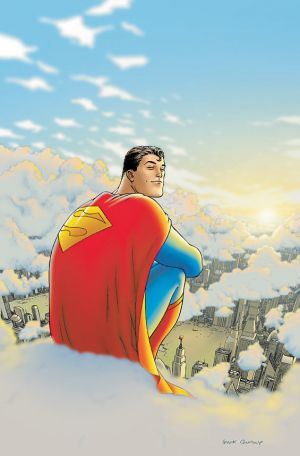 |
Zak: Unlike our resident Superman fan, Andy Frisk, I usually find Superman pretty boring and uninteresting. His powers can make your usual action plots too ridiculous too quickly, and his lack of moral ambiguity can make him as a character pretty flat. Grant Morrison and Frank Quitely’s All-Star Superman, however, is probably one of the best superhero stories to come out of DC, if not all the big publishers, in the 2000s. Just like his recently completed run on Batman, Morrison’s Superman takes all of his history into account and tells one of the hero’s final tales, before he becomes one with the sun that grants him his powers. The book draws heavily on mythology and is absolutely gorgeous, as usual for Quitely. Taking Superman at the peak of his powers and with the strongest moral compass yet, Morrison also embraces everything that is usually a burden for other writers and turns it into the greatest strengths. Superman is the best we have to offer as a species, and its great to witness him battle for us.
Daredevil (Brian Michael Bendis - Marvel Comics)
Zak: The opening story of Brian Michael Bendis’ award-winning run on Daredevil restored my faith in superheroes. The story, about a young boy named Timmy, is as much about the violence of superheroes as it is about one boy’s traumatic experiences as the son of a supervillain. The rest of Bendis’ run, brilliantly drawn by Michael Lark, continues to think about where a superhero may go. Matt Murdoch’s identity gets leaked to the press, he becomes the new Kingpin, and eventually has to answer for his many crimes as a masked vigilante. The stories are brutal, quite often told from the perspective of Daily Bugle reporter Ben Urich, and take Daredevil to new lows. Back when this started, Bendis wasn’t the powerhouse writer he is now, but he took what he did best, noir and solid dialogue, and made a run to challenge Frank Miller.
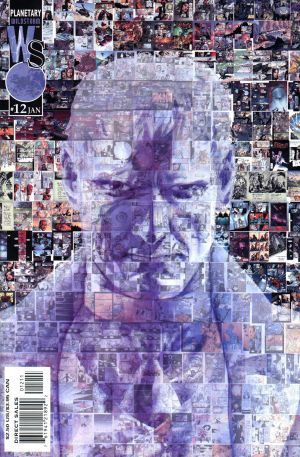 |
Zak: Planetary is a strange book and necessarily so. The early 2000s seemed like a period of competing superhero trends: a fall backwards into the Dark Ages to cope with the darker times of 9/11 and something else that pushed the superhero into a different direction entirely. Grant Morrison’s Flex Mentallo tries its hardest to figure out what that means, but Warren Ellis’ Planetary simply shows where superheroes, and comics in general, are going. The series follows Elijah Snow and his team of archaeologists as they uncover the history of the medium, spending issues analyzing the various genres that comics steal from on a daily basis. Highlights include the giant monster movies from Japan, HongKong action films, and, perhaps most memorably, a journey into the eighties and nineties of American comics, with a John Constantine surrogate changing into Ellis’ own Spider Jerusalem at an issues end. Planetary is comic as literary critic, and does so with a keen eye and thoughtful writing. Plus, the series is drawn by comic great John Cassady. Plagued by delays, the series took nearly the entirety of the 2000s to complete its 27 issues, but the wait was worth it, and comics couldn’t be the same afterwards.
Zuda Comics (DC Comics)
Hervé: In 2008, DC Comics experimented with Web comics with a new imprint Zuda Comics. Web comics had been around since the 1990s but a few series like Penny Arcade were generating a lot of buzz. DC Comics attempted to remain fresh and explored Web comics through competitions and crowdsourced contents from creators. In exchange for displaying their comics, DC Comics would own the new series. Many creators participated but the overall project was discontinued a few years later. In hindsight, if DC Comics had stayed the course, they might have finally figured out how to go about Web comics. But what mattered here is that a major comics publisher tried to propose original contents to comics lovers. Web comics are more akin to comics strips so DC Comics can perhaps be forgiven for failing at a model that it was not used to. However, DC Comics’ efforts were later improved upon by Marvel Comics and other publishers as instead of offering comics strips about unknown properties, they delivered contents (often original) about popular characters. Zuda Comics was a failure, but it marked the beginning of the integration of digital comics to the world of print comics by major publishers.
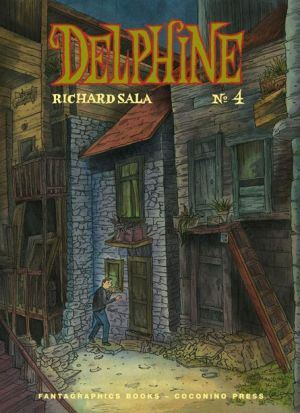 |
Incognegro (by Mat Johnson and Warren Pleece – DC Comics/Vertigo)
Louis Riel (by Chester Brown – Drawn & Quarterly)
Love and Rockets: Volume II and New Stories (by Gilbert Hernandez and Jaime Hernandez with Mario Hernandez – Fantagraphics Books)
Naruto (by Masashi Kishimoto – VIZ Media)
Nat Turner (by Kyle Baker – Kyle Baker Publications)
Numbers (by John Ira Thomas and Jeremy Smith – Candle Light Press)
Parker (Darwyn Cooke – IDW Publishing)
The Plain Janes (by Cecil Castellucci and Jim Rugg – DC Comic, Minx)
Related Articles:
The Ten Most Important Comics of the 2000s
The ten most important comic books of the 1990s
